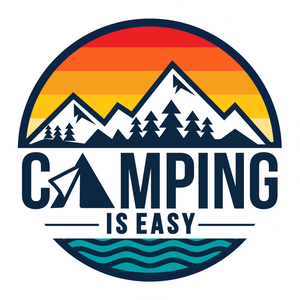If you’re going on a long hike you’ll probably need to wash your clothes at some point while on the trails. Unless of course, you’re backpacking in the buff or you’re celebrating Nude Hiking Day with the other freewheelin’ naturalists in Colorado.
Mother Nature doesn’t have a laundromat that we’re aware of yet, so your choices are either spending days in dirty clothing, hauling around a heavy pack, or learning how to wash your clothes on the go.
I personally recommend skipping the wash cycle and embracing the buck-naked backcountry, but for the more inhibited, here’s a guide to doing your laundry while hiking.
Wash Smart
Just like you wouldn’t think of scouring your long johns in the community swimming pool, never wash your clothing in or near a water source. Not only are you contaminating it for yourself, you’ll also be harming the animals that drink from the same river you’re washing your Axe-soaked shirt in. LNT guidelines require you to find a spot at least 200 feet away from water sources, camp and trails.
When choosing a laundry detergent, opt for a scentless formula. NEVER use a nitrate-based soap to wash your clothing. These high-phosphate detergents kill the soil’s naturally-occurring and helpful bacteria, as well as cause an overabundance of water-based algae. When this alga decomposes, it uses up the oxygen available for other aquatic life to survive.
I highly recommend picking up a bottle of Dr. Bronner's Pure Castile Liquid Soap - Baby Unscented. It’s an all-natural product that’s marketed as the “Swiss-army knife” of cleaning – you can use it for everything from shampooing your hair and washing dishes to scrubbing the underwear Mom got you for your birthday last year.
By the way – Mom will understand if you leave those Underoos at home. Instead, choose a pair that are breathable, moisture-wicking and quick-drying. That goes for the rest of your wardrobe as well. Packing clothing that dry quickly will make your life much easier and minimize the chance that you’ll be squishing along in damp socks.
Look for items made of merino wool, which regulates moisture and heat better than most materials. Plus, as a naturally antimicrobial texture, it can be worn unwashed for weeks without developing an odor. Synthetics like polyester and nylon can be cheaper and are commonly treated to provide these same antimicrobial properties, but these will wash out eventually.
Laundry Day
Choose a designated laundry day and get into camp early – aim for around 2 or 3 in the afternoon, or whenever the sun will be at its highest. You’ll be washing your clothes and hanging them out to dry, so the longer they’re outside, the better.
Wash Bucket Method
Pack a collapsible wash bucket that’s made of synthetic fabric, like this one from Freegrace. They’re lightweight, easy to slip in a pack, and make it simple to carry water away for the sourse. Try to only use it for laundering purposes, unless you like the taste of soap in your oatmeal.
The method is the same as washing your clothes in the sink. Simply fill with water and a few drops of soap, throw your laundry in, and hand wash. Once you’re done, you can fill it with clean water to rinse everything clean. Pro tip: Use as little soap as possible to make rinsing easier.
Bag Method
Another easy option is to place your dirty clothing in a large, heavy duty zip lock bag along with water and a small amount of soap (aLOKSAK bags are pricier but another great option). Squeeze all air out of the bag, seal shut, and shake it to agitate the mixture until your clothes are clean. Prepare for the post-wash water to be pretty gnarly if you’ve been on the trails for a few days.
Wring the clothes out and transfer into another gallon bag with clean water. Follow the same steps to rinse clean, then wring out again.
Scrubba Wash Bag Method
Scrubba was the darling of IndieGoGo five years ago when it made its debut, racking up more than $22,000 during its campaign. The interior has several small scrubbing knobs that are supposed to be twice as effective as hand washing when kneaded.
As a plus, Scrubba is lightweight and compact, so it fits easily into packs without adding unnecessary bulk. At nearly $50, it’s the priciest option out of the three, but delivers a machine-quality wash in just three minutes. The pouch also doubles as a dry bag, making it an all-in-one solution that has maintained a loyal following among hikers and campers.
Disposing + Drying
For all three methods, you can reuse the soapy water to repeat as necessary and wash multiple items of clothing. Once you’re done, make sure to scatter the dirty water within the wash area to prevent soap from seeping into the soil and killing plant roots.
Throw clothes over rocks to dry, place them by the campfire, or hang them up on a line strung between your tent and a tree. You can also kill two birds with one stone and string everything up from the same wire system that you hang your pack on.
To speed up the drying process, wrap your clothing in a camp towel or shammy and re-wring to remove more water. Keep repeating this until no more water can be absorbed.
If you don’t have time for your clothing to dry overnight, wring your clothing out and tie them to the outside of your pack while you’re moving. Again, make sure you don’t use a scented soap, or you could become a moving target for animals like bears and mountain lions.
Happy washing, ya filthy animals.
Explore Our Comprehensive Guide on the Top 25 things to bring while camping with your girlfriend

